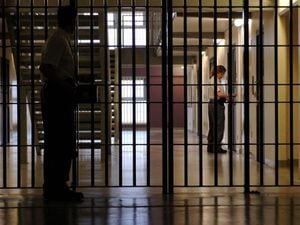Police use of force on the rise - but chiefs say it's only as a last resort
Call outs resulting in police officers using force have risen sharply compared to before the pandemic, new figures show.

Home Office figures show the number of incidents in which West Midlands Police used force rose 67 per cent to 18,661 in the year to March, from 11,187 in 2019-2020.
Of the incidents last year, 1,562 resulted in the subject being injured.
Meanwhile, Staffordshire Police recorded a small rise over the same period.
In the 12 months to March, restraint tactics – such and handcuffing or forcing people to the ground – were used 14,765 times in the West Midlands.
Men aged 18 to 34 accounted for nearly half of the incidents which involved police force being used in the region. Police forces can use multiple tactics in one incident, so this figure may be higher than the total number of incidents where restraint was used.
The figures come as a human rights charity says the police "should not be handed new powers", as it claims current ones put the public at risk of harm.
Police bosses say that force is only used where there is no other choice and improvements in recording may be responsible for the rise.
Chief Inspector Jason Nunn, West Midlands Police force’s lead on use of force, added: “Every time an officer uses force, their supervisor reviews the record including watching back their body worn video.
"This is to make sure that the use was ethical, proportionate and legal. If it falls below the standards we expect from our officers, then action is taken.
“We have robust processes in place which includes digital recording, the data we gather makes us more accountable to the public we serve.
"We use the data to provide organisational learning which helps us to continually review our methods, training and communication skills.
“There are times when there is no other option but to use force, but when we do, we are open, honest and transparent and open to scrutiny by supervisors and our public.”
Chief Inspector Nunn also said force was only used by officers as a last resort.
"Our aim is to use de-escalation techniques where ever possible and we will only use force where we have no other choice and where it is appropriate, ethical and legal," he continued.
“We have improved how we record our use of force statistics and now complete a digital record whenever we use handcuffs.
"Handcuffing would not have been recorded as a use of force in the past and this may go towards understanding why the recording has increased."
He said scrutiny around the way officers use force was important for the police force and for the public.
"We hold regular community scrutiny groups, these are members of the community who have been chosen because they understand their communities, have a voice in their communities and where needed, hold us to account for our actions," he added.
“We ask these scrutiny groups to review every use of force that has been recorded. Their job is to make sure we have used force appropriately, fairly and legally."
Across England and Wales, 608,000 use of force incidents were recorded in 2021-22, up from 492,000 in 2019-20.
Gavin Hales, a senior associate fellow at the Police Foundation think tank said last year involved “something of a return to normal crime levels” after a drop in crime over successive lockdowns.
He added that the rise could in part be due to the recruitment of new officers, and improved recording of incidents by police forces.
Home Office figures also show the number of incidents in which Staffordshire Police used force rose one per cent to 3,426 in the year to March, from 3,391 in 2019-2020.
Of the incidents last year, 454 resulted in the subject being injured.
Across the country, 79 per cent of incidents involved restraining the subject – such and handcuffing or forcing them to the ground – with restraint tactics being used 3,300 times in Staffordshire.
A spokesman for Staffordshire Police said: "When it is necessary to use force – for example, when someone poses an immediate danger to others or themselves – a range of methods are available to officers, including handcuffing and appropriate restraint.
"Annual mandatory training is undertaken by our frontline officers and staff on the assessment of often fast-moving situations, decision-making and the legal and practical aspects of using force.
"The use of force is regularly scrutinised, both internally and independently, in order to ensure its use is lawful and proportionate."
Emmanuelle Andrews, policy and campaigns manager at civil rights campaign group Liberty, cautioned against calls to extend police powers.
She said: “We must have meaningful discussions about how we can better keep communities safe, and prioritise solutions which have human rights and social justice at their heart."
A Home Office spokesperson said that sometimes force can be a "vital tool" in policing.
“We are clear that nobody should experience force because of their race,” they added.
“The causes of racial disparities in the criminal justice system are complex and reflect broader social inequalities the UK Government is committed to tackling.”
The spokesperson said the Home Office is making it easier for officers to use body worn video and giving communities opportunities to scrutinise incidents of police force.





